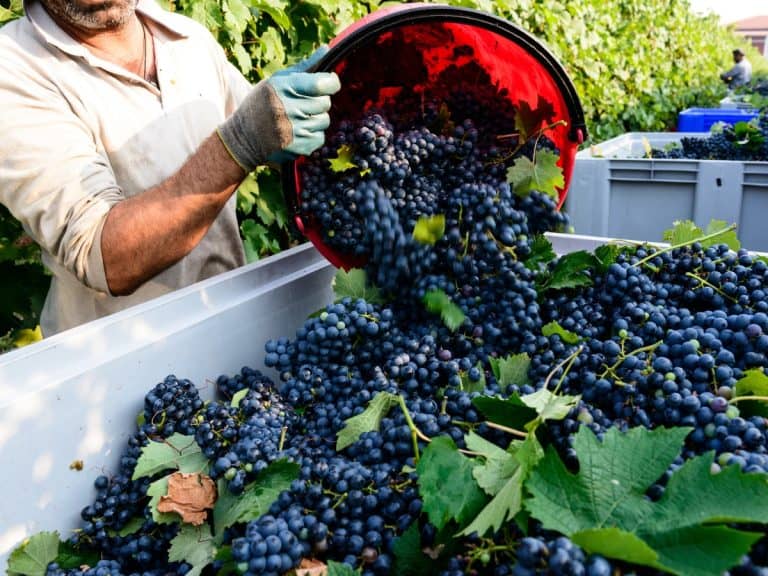Nothing like this had been seen since 1947. The 2023 harvest was the smallest in 76 years. This is certified by official data communicated by the Ministry of Agriculture, Food Sovereignty, and Forests to the DG Agri: Italian wine production last year stopped at 38.3 million hectoliters, with a sharp decrease of 23.2% compared to the volumes of the year 2022.
The figure is in line with the estimates reported at the end of November by the Assoenologi, Ismea, and Italian Wine Union (Uiv) Observatory. Several vine diseases, starting from downy mildew, a fungal disease fueled by intense and unusual rains, have caused the significant contraction, especially in central and southern Italy. Here is our semi-serious interview conducted a few months ago. The September climate partially helped recover some situations, for a year that on paper is certainly more suited for sparkling wines and white wines.
Since the times of Coppi and Bartali
In the study presented by the Assoenologi, Ismea, and Uiv Observatory, PDO wines account for almost 52%, while PGIs represent 25% of the total product. The poor vintage comes at a delicate time for Italian wine, which is facing a decline in exports to reference markets and a decent level of stocks. To find such a light year, you have to go back to the year when the first Polaroid and instant photography (about a minute) were born; Ethiopia declared independence from Italy; Fausto Coppi won the Giro d'Italia ahead of Gino Bartali. It's worth noting, finally, that the record for the heaviest harvest belongs to the year 1999, when Italian production reached 58.1 million hectoliters. A record that today seems very difficult to achieve.
Price Increases and Wine Surplus
For the general secretary of the Italian Wine Union (Uiv), Paolo Castelletti, a harvest of 38 million hectoliters opens two fronts of analysis. Starting from market repercussions: "With Italian production at historic lows, 2024 looks very complex and challenging, our companies will have the vital need to increase the unit value of their products, in a macroeconomic context that is not the most favorable. It was already seen last year, with the difficulties experienced in the retail circuits of the main countries, where even limited price increases corresponded almost automatically to declines in volume purchases."
The other issue goes beyond the conjunctural data: "It is paradoxical," added Castelletti, "to talk about the poorest harvest since the post-war period at a time when the real problem lies in the surplus of wine determined by past harvests of over 50 million hectoliters. But a fungal disease cannot rebalance a situation that only 8 months ago marked the record of stocks in recent years. Today more than ever, political choices are needed for the medium and long term in favor of quality and structural reform of the sector. It would be necessary to discuss strategic plans together with the institutions to consider delicate choices. Instead, in a year and a half, we went from denying the problem - that of the productive surplus detected by the Italian Wine Union already in suspicious times - to the issue of removals financed by tapping into funds instead intended for the restructuring of vineyards that over the years have become a symbol of Made in Italy." For this reason, concluded the Uiv secretary, "we consider it necessary to accelerate the establishment of a working group at Masaf to work on the perspective of the Italian wine sector by 2030."


 Three days at Lake Como in 17 destinations: Trattorias, Osterias and Fine Dining
Three days at Lake Como in 17 destinations: Trattorias, Osterias and Fine Dining Piedmontese classics and raw seafood. The unexpected restaurant with a pool in the Langhe
Piedmontese classics and raw seafood. The unexpected restaurant with a pool in the Langhe US Tariffs. according to the Government, a 10% rate would not be impactful, but for most wineries the risk is high
US Tariffs. according to the Government, a 10% rate would not be impactful, but for most wineries the risk is high Grilled vegetables and chicken on the side: in Chianti, plant-based cuisine takes centre stage
Grilled vegetables and chicken on the side: in Chianti, plant-based cuisine takes centre stage A top gelato maker from Florence launches flavours dedicated to women who made history
A top gelato maker from Florence launches flavours dedicated to women who made history






